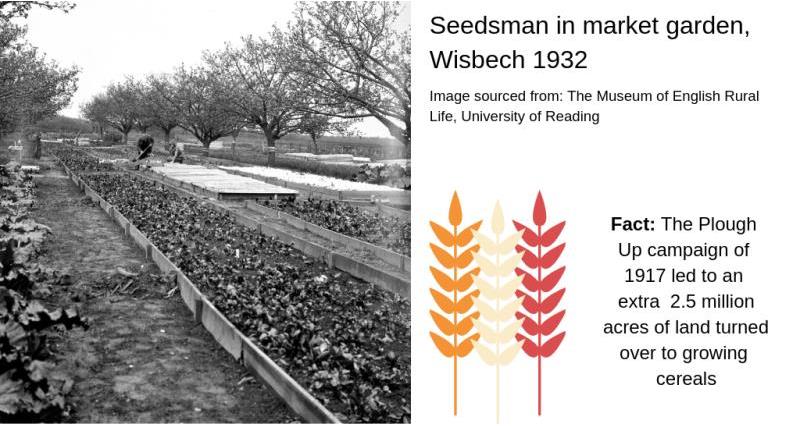A poor harvest in 1916 further compounded the problem and it became apparent action was needed to avert a real crisis.
The year 1917 heralded change; voluntary rationing – which then became compulsory – was introduced while the Corn Production Act guaranteed farmers minimum prices for their wheat and oats.
A plough-up policy turned more pastures over to arable cultivation; this created a further 2.5 million acres for food production and resulted in a bumper harvest in 1918, when almost nine million acres of grain and potatoes were sown.
But things changed after the end of the war. “Farmers were concerned with the economics of farming, and prices started to fall in 1920, with mitigating losses. The government was concerned about what we would now call food security and the Agriculture Act of 1920, which continued subsidies, was an expression of this,says Prof Burchardt.
“However, this was rapidly overtaken by the ‘Great Betrayal’ of 1921 when subsidies were withdrawn due to the financial crisis. A more lasting expression of the government’s changed attitude to agriculture was the Sugar Beet Act of 1925, which introduced subsidies on sugar beet.
“During World War One, Britain had been dependent on cane sugar from the West Indies, which was vulnerable to U-boat attacks. This was the reason for the 1925 act, which is why sugar beet became an important field crop in the UK, as it remains to this day.
“Agricultural policy during the war was the model for future agricultural policies – guaranteed prices and a degree of government control over cropping – which, in turn, formed the basis for the relationship between government and agriculture involving subsidies to achieve food production stability and security, that we have to this day,” concludes Prof Burchardt.
Farming and the First World War homepage
How the countryside recovered from World War One?
Farming and the First World War: The role of stately homes
Farming and the First World War: Wartime women
Farming and the First World War: Mechanisation and the workhorses of war
Farming and the First World War: Food supply
Farming and the First World War: The humble pea
Farming and the First World War: The Women's Land Army
Farming and the First World War: The blind farmer
The Few That Fed The Many: Special publication on the role farming played during World War One?
